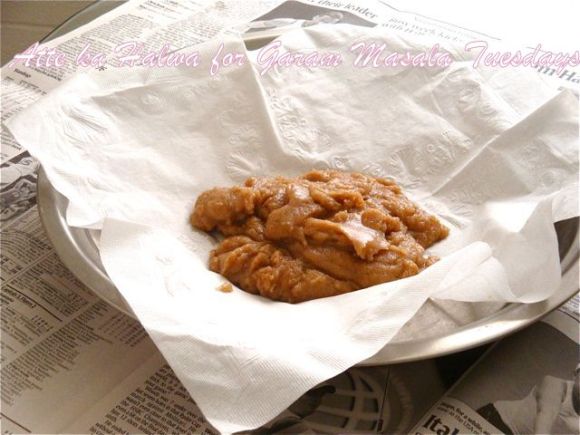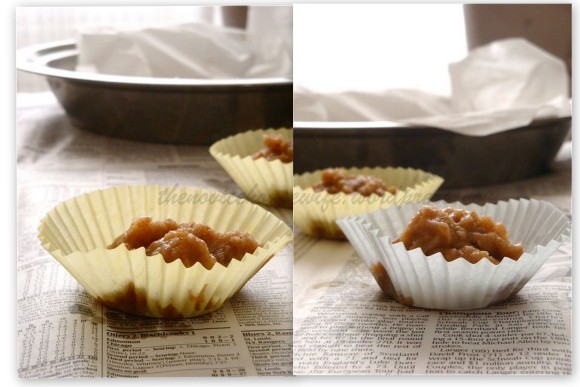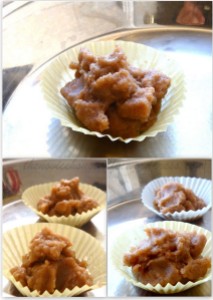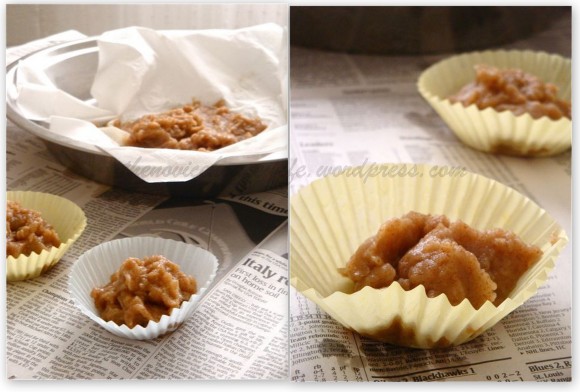 Yesterday was Janmashtami, a Hindu festival celebrating the birth of Krishna, an avatar of the god Vishnu.
Yesterday was Janmashtami, a Hindu festival celebrating the birth of Krishna, an avatar of the god Vishnu.
Sri Krishna taught us Karma Yoga. He strongly dictated in Gita that a man is bound to get the fruits of his actions. If he has done good actions/deeds throughout his life, he will get good results. Karma yoga is action (karma) performed without expectations or thought of reward. This selfless service of karma yoga is the path by which the mind is most quickly purified and its limits transcended.
Growing up as a Sikh, Janmashtami was just another holiday for me. But for V, a Hindu, its always been an important festival. His parents keep a fast the whole day on Janamasthami, only breaking it after offering prayers to Lord Krishna around midnight.
Though I did not keep a fast, I did not eat anything till I took a bath and first offered some food to the idol of Lord Krishna (I know that’s no feat but I thought I’ll mention it nonetheless 🙂 ). Sweets and desserts are the most preferred dishes for Janamashtami offerings, because Lord Krishna was known for his sweet tooth and generally some kind of kheer or Halwa is offered to him.
 So, I took upon myself to make Halwa (pronounced hull-wa).
So, I took upon myself to make Halwa (pronounced hull-wa).
Halwa is a popular Indian dessert made from various kinds of fruits, vegetables, grains and lentils. If using fruits in Halwa, they are grated finely and fried in ghee and sugar. Nuts and milk may also be added. Halwas have the consistency of a very thick pudding.
My trials with halwa making haven’t been too great. In the past I have tried making Sooji Halwa (made from semolina), one of V’s favorite desserts. The first time was a disaster and the timing of it couldn’t have been more perfect (read about that disaster here). Of course now I have a failproof recipe for Sooji ka halwa.
This time I thought I would make halwa from whole wheat flour- atte ka halwa (atta/atte is the hindi word for whole wheat flour). Personally, I prefer the whole wheat one to the semolina one, probably because that was generally what my mom made and carries with it a lot of memories.
After my 10th standard exams, my dad got posted to Delhi. Now 10th and 12th are crucial years for Indian students- the Board exam years. So when my dad got posted to Jaisalmer, (Rajasthan) during my 12th standard, in the middle of the school year, my mom decided to stay back with me in Delhi, and join him after I was done with my exams.
Now, like me, my mom used to get lazy to cook elaborate meals with my dad not there. Plus, I was fine with eating easier to cook one dish meals like parantha, and rajma chawal. And for dessert, almost everyday, both she and I would have atte ka halwa. She would just make enough for the two of us, with each serving consisting of 5-6 bites. But she would make sure it was made properly, with no skimping on the amount of ghee. It was a thing my mom and I shared and I will always treasure those afternoons for the fun we used to have eating and enjoying the halwa she made.
ATTE KA HALWA/ WHOLE WHEAT INDIAN PUDDING
 Now with this recipe you just can NOT cringe at the amount of ghee called for. If you are calorie conscious just eat two bites of it- but make sure whatever amount you eat- is the real thing! And if you are a gung-ho health freak, find solace in the fact that its whole wheat! Either ways make your peace with the recipe and try it as is. Do not reduce the amount of ghee. I mean you will get a good product but not the best! This is also the Halwa that is offered in Gurudwaras (a place for Sikhs to pray) as prasad (god’s offerings). Its the most simplest of all halwas, but do not be fooled by its simplicity!
Now with this recipe you just can NOT cringe at the amount of ghee called for. If you are calorie conscious just eat two bites of it- but make sure whatever amount you eat- is the real thing! And if you are a gung-ho health freak, find solace in the fact that its whole wheat! Either ways make your peace with the recipe and try it as is. Do not reduce the amount of ghee. I mean you will get a good product but not the best! This is also the Halwa that is offered in Gurudwaras (a place for Sikhs to pray) as prasad (god’s offerings). Its the most simplest of all halwas, but do not be fooled by its simplicity!
Serves 2-3 people (depending on how much you serve)
Ingredients
- 3 tbsp ghee or clarified butter (you could use more but not less!)
- 3 tbsp whole wheat
- 3 tbsp sugar (you could use a little more if you like it sweet- for me this is just about right)
- 1 cup water
Directions
In a saucepan, heat the sugar and water till boiling. While, the sugared water boils, heat the ghee in a wide skillet (or kadhai/wok). Add the whole wheat flour and fry the flour, on medium-high heat, stirring continuously, till it starts changing color and you get the aroma of cooked flour. Gradually add the water (keep caution here as steam will escape) and keep stirring so that it doesn’t form any lumps. Stir until the water is fully absorbed and the ghee starts separating. Serve hot (believe me, you want to serve it hot!). Enjoy!





Hello Shumy! I ahve tried this one before, to satisfy the midnight sweet binge 🙂 However, my experience has been that Atte ka halwa sticks to the pan much more than Sooji ka!! Any tips on how to avoid it?
Well, Apramey, I have never experienced this problem- I use a non stick pan- it could be because of that. Also, I guess the ghee kind of prevents the atta from sticking to the pan. I use a 1:1:1 ratio for the sugar, atta and ghee. So it is a lot of ghee!
Have you experienced this problem even when you put sufficient ghee and/or use a nonstick pan?
When I was a little girl, I had a friend who’s Mom used to make us luscious Indian desserts whenever I was over. My rwo favorites, jilebi and halwa. Your post brings back so memories because she would serve us the halwa in pretty paper liners. I wish I could go back in time for real – just for one day there, but your post comes close!
That’s such a sweet thing to say! I am glad that I could bring back such memories!
i never ever ate aate ka halwa! This looks nice and sounds healthy too.
Well, I do not know about the healthy part (there is a lot of ghee in it) but can assure you it is delicious! Do give it a try!
Tried this and it was yummy! I always like the kadha parsad we used to get in gurudwara and wondered hw do they make it so yum! Thnx for sharing this loved every bite of it 😉
Pingback: Besan Ke Ladoo and Round up of Diwali Desserts - The Novice Housewife